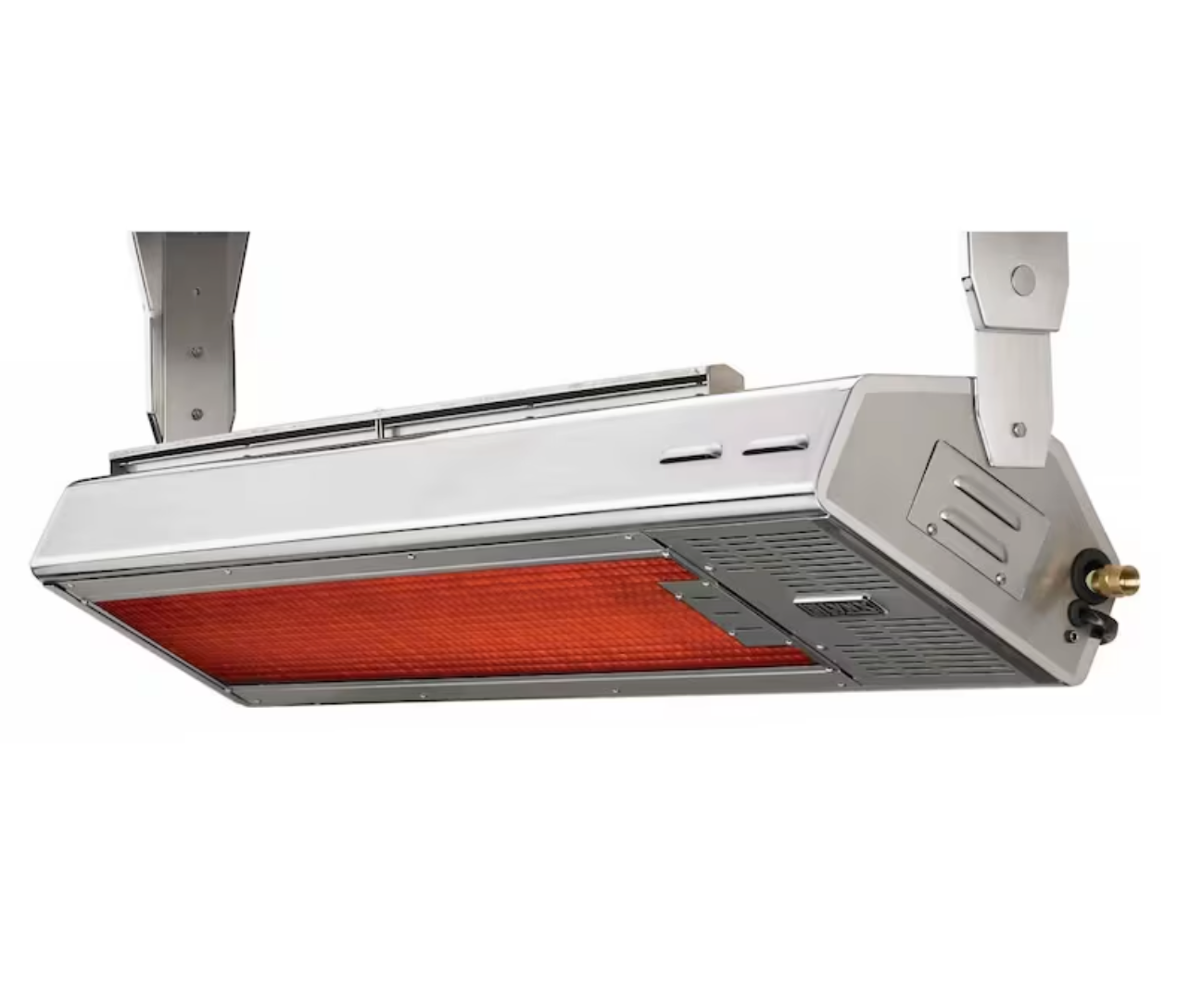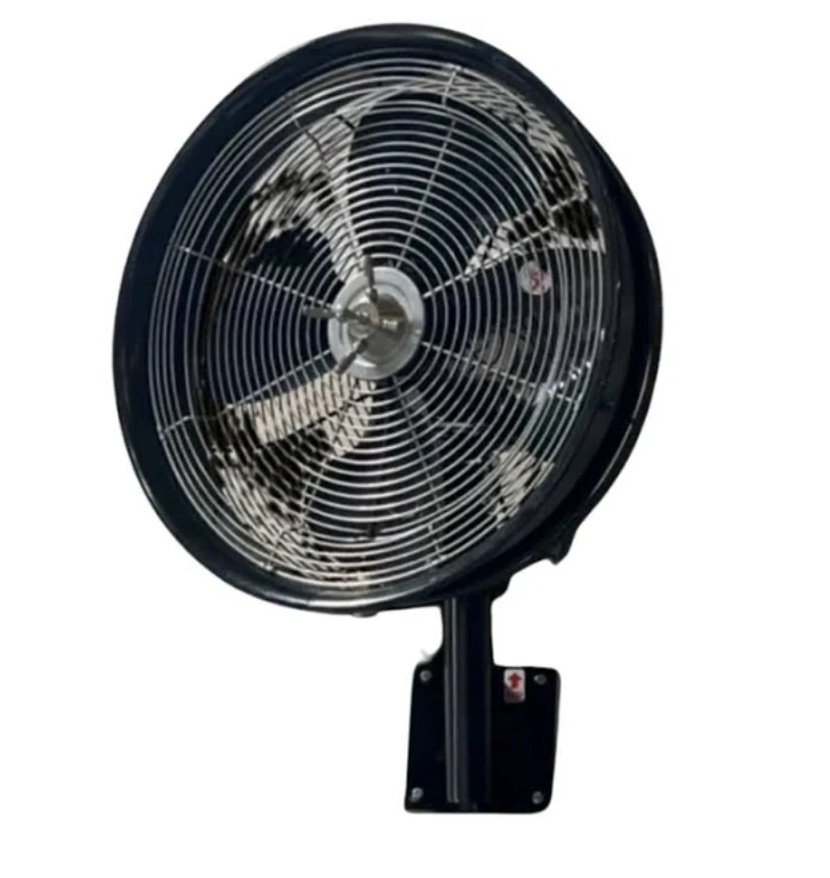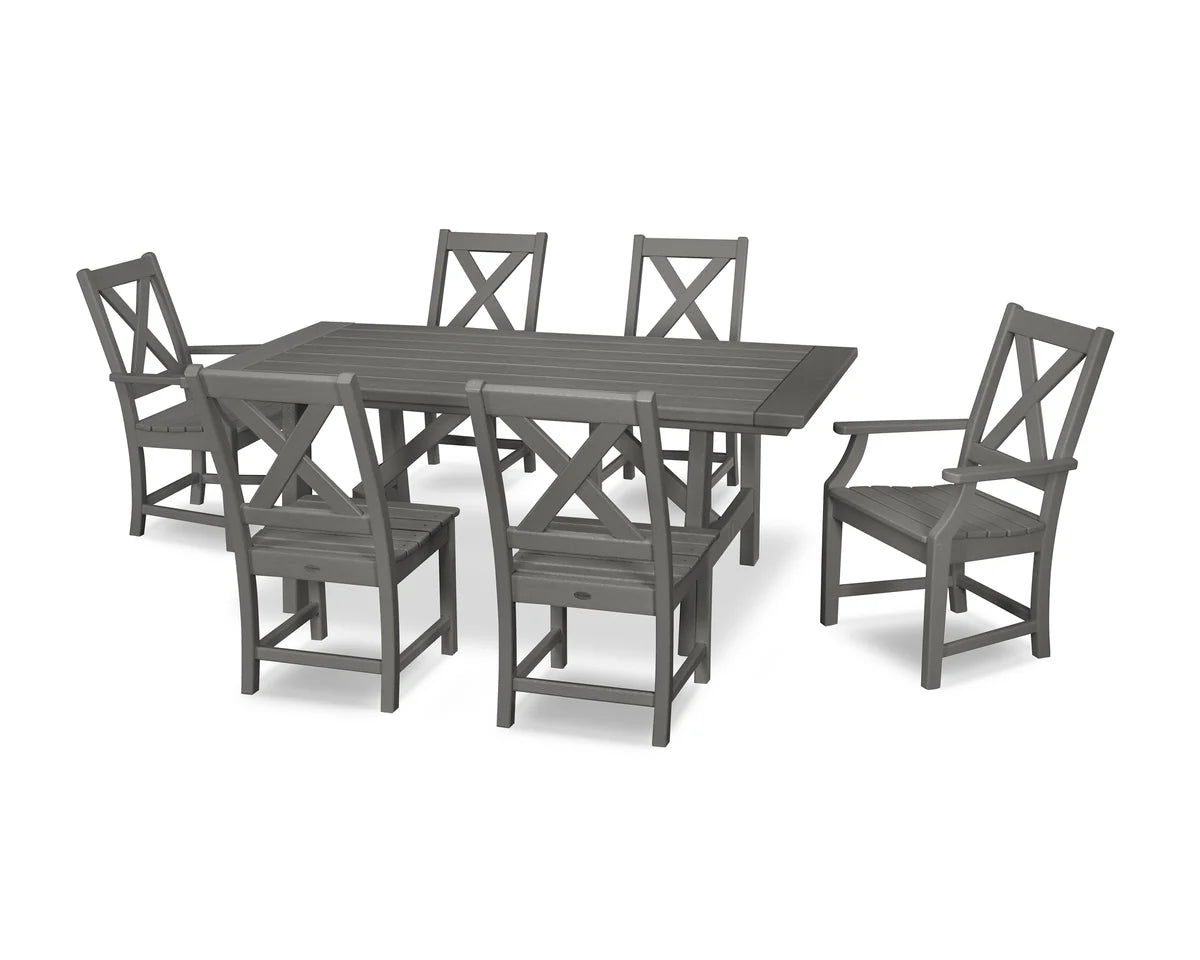Outdoor Kitchen on a Budget: Tips for San Antonio Homes
Building an outdoor kitchen can sound like a tall order, especially when money is tight. But what if I told you that creating your dream cooking space in San Antonio doesn't have to drain your wallet? With a little creativity and smart planning, you can enjoy al fresco dining and entertaining without the hefty price tag. Whether you want to flip burgers for a large gathering or enjoy a quiet meal with the family, our tips below will show you how to achieve the outdoor kitchen you've always wanted without sacrificing quality or style. Let’s dive into some budget-friendly ideas that truly make this project achievable!
To build an outdoor kitchen on a budget in San Antonio, consider using cost-effective materials such as concrete or reclaimed wood for your countertops and cabinets. Additionally, focus on essential appliances like a grill and simple seating options, and look for sales or discounts at local stores like BBQ Outfitters to maximize your spending power while still creating an inviting outdoor cooking space.
Planning Your Outdoor Kitchen
Before diving into the actual construction or purchasing of fancy grills, take a moment to reflect on your ultimate goals for the outdoor kitchen. What kind of atmosphere do you want to create? Will this be a lively area for entertaining friends and family, or more of a serene retreat for quiet dinners? Asking these questions can help shape every decision moving forward.
Step 1: Decide on Usage
Think about how often you'll use the outdoor kitchen and your anticipated activities there. Are you dreaming of hosting frequent barbecues, cooking gourmet meals outdoors, or simply having a space where you can enjoy coffee while watching the sunrise? This will significantly influence decisions regarding the style and number of appliances you'll need. For instance, if you're planning to host large gatherings regularly, investing in a bigger grill or an outdoor pizza oven might make sense. Alternatively, if it's just for casual family meals, a smaller setup could suffice.
Imagine standing outside with your loved ones, laughter filling the air as aromas from your grill waft gently through the breeze. Visualizing these moments can impact how you choose to design the space—consider elements that foster connection and comfort, such as seating arrangements and shade structures.
Step 2: Set a Budget
Next up is setting a budget that reflects these aspirations. Start by writing down all potential costs: appliances like grills and refrigerators, materials like countertops and cabinetry, labor if you're hiring professionals, and even landscaping elements to enhance your outdoor vibe. A hot tip here is to add about 10% contingency funds to your budget—life happens! Whether it’s upgrading an appliance or needing extra materials due to unforeseen issues, having that buffer can save you from stress later on.
Remember that establishing a budget isn’t just about limiting yourself; it’s also about empowering your creativity within those constraints. Maybe that means splurging on high-quality materials that last longer or opting for financing options where needed. With careful planning, high-quality components need not break the bank.
Step 3: Outline Must-Haves vs. Nice-to-Haves
Finally, prioritize what features are essential versus those that would be lovely but not necessary right now. For example, think of core items like a robust grill, prep areas, and sufficient storage spaces as must-haves since they form the backbone of any outdoor kitchen. On the other hand, luxuries such as intricate fire pits or specialty cuisine appliances can be seen as nice-to-haves; plan them in phases if necessary.
By creating this distinction between essentials and extras, you’re building the perfect setup that satisfies current needs while maintaining room for future enhancements.
With this structured plan in mind, you're ready to uncover economical options for equipment that match your vision and available resources.
Budget-Friendly Appliances and Materials
When it comes to outdoor kitchens, the appliances you choose can significantly influence the overall cost while still ensuring functionality. Rather than splurging on premium models, consider high-quality options that offer great value without sacrificing performance.
For example, the Blaze 4-Burner Grill available at BBQ Outfitters strikes a perfect balance between quality and affordability. It’s a popular choice for many San Antonio homeowners who want robust grilling capabilities without an extravagant price tag.
Additionally, here are some other smart appliance choices:
- Basic two-burner gas stoves allow for flexibility in meal preparation while keeping costs manageable.
- Compact refrigerators can keep your beverages cold and groceries fresh without taking up too much space, making them ideal for outdoor settings.
- Consider charcoal grills over gas grills if you wish to cut down on initial costs; they often come with a lower price point while offering rich smoky flavors.
The choices you make about materials will also have a significant effect on both your budget and the durability of your outdoor kitchen.
Materials
When selecting countertops, opting for concrete or tile can be more economical than traditional granite. Not only are these materials durable, but they also offer a range of aesthetic options to fit various styles. Using recycled or repurposed materials wherever possible can further reduce costs while adding character to your outdoor kitchen.
|
Appliance/Material |
Budget-Friendly Option |
|
Grill |
Blaze 4-Burner Grill |
|
Countertop |
Concrete or Tile |
|
Flooring |
Stamped Concrete |
|
Refrigerator |
Compact Refrigerators |
|
Cabinets |
Stainless Steel Alternatives |
Stamped concrete makes an excellent flooring option, providing both durability and a customizable look that mimics higher-end materials. Moreover, choosing stainless steel alternatives for cabinets keeps an upscale feel without hefty expenses. These options not only ensure long-lasting appeal but also weather beautifully against San Antonio's unique climate challenges, such as heat and humidity.
As you evaluate your choices for appliances and materials, it's crucial to consider how they align with local conditions and needs.
San Antonio-Specific Options
In this vibrant city where barbecues become social events, the climate demands careful consideration when selecting materials and appliances. Given the hot summers and mild winters, it pays to invest in durable and weather-resistant solutions tailored to the local environment. It's not just about aesthetics; it's about crafting a space that can endure the elements while providing a comfortable atmosphere for grilling and entertaining friends.
Weather-Resistant Choices
Choosing UV-resistant materials is critical for countertops and cabinets to avoid fading and deterioration from the intense Texas sun. Opting for ceramic tile or natural stone keeps your surfaces beautiful and functional, as they can withstand heat without cracking. These materials provide a rustic charm that seamlessly integrates into the San Antonio landscape, ensuring your outdoor kitchen remains inviting year after year.
“The right materials really do make a big difference—investing in quality can save you time and money in the long run.”
Here are some excellent materials well-suited for the San Antonio climate:
- UV-resistant countertops: Consider quartz or specially treated vinyl.
- Ceramic tile or stone: Perfect for adding texture and durability.
- Weather-resistant outdoor fabrics for seating: Look for high-quality acrylic or polyester blends that repel moisture and resist fading.
As you consider these materials, remember that the arrangement of your outdoor kitchen is just as crucial for creating an effective cooking space. Exploring how to optimize your layout will enhance both its functionality and aesthetic appeal.
Design and Layout Ideas
A well-thought-out design can transform even the most confined outdoor settings into inviting cooking and entertaining areas. The key is to think compact and modular; this approach not only optimizes space but also allows for flexibility as your needs evolve. Imagine using small, movable units that can be rearranged for different occasions—whether you're hosting a barbecue with friends or having an intimate dinner with family. Your outdoor kitchen should work around you, not the other way around.
Space-Saving Layouts
One of the most effective layouts is to use an L-shaped or U-shaped design, which brilliantly utilizes corner spaces often overlooked in traditional setups. An L-shaped kitchen, for example, can create a natural flow from cooking to serving without feeling cramped. The open side provides easy access for guests while you work away at the grill or food prep station.
If you choose a U-shape, it forms a cozy kitchen enclave where everything remains within reach, making it perfect for multitasking.
Moreover, placing your grill adjacent to prep areas is a smart move as it streamlines the cooking process. Imagine grilling meat while slicing fresh vegetables just steps away—it makes for a more efficient experience overall. Additionally, consider integrating multi-functional surfaces such as countertops that can double as dining space or built-in storage that keeps cooking essentials organized without cluttering your area.
Balancing aesthetics with functionality is essential; thoughtful design can enhance outdoor enjoyment while ensuring every square inch serves a purpose.
Another tip is to incorporate a bar-height counter or seating arrangement that invites conversation. This setup not only draws guests into the culinary action but also encourages connections among friends and family gathered at home.
Ultimately, the goal is to achieve a layout that feels right for your unique lifestyle. Think about how you'll use the space: Do you envision hosting cookouts frequently? Or perhaps more intimate gatherings? By planning accordingly, you can create an outdoor kitchen that caters specifically to your habits and preferences.
By treating layout and design with intention, you're investing in lifelong memories created outdoors with friends and loved ones.
As you reflect on these ideas, considering how best to put them into practice will set the stage for important decisions ahead regarding installation methods.
DIY vs Professional Installation
When it comes to building your outdoor kitchen, weighing the pros and cons of DIY versus professional installation is crucial to ensuring your vision becomes a reality without overspending or compromising quality. While diving into a DIY project presents an appealing prospect of savings, it can also bring unexpected challenges—like missing out on that polished finish you'd get if you hired a pro. A well-considered approach will serve you in the long run.
DIY Insights
Depending on your comfort and skill level, DIY projects can be both budget-friendly and rewarding. If you're up for the task, consider utilizing DIY kits. These kits simplify the process and often come with all necessary components, allowing you to focus on simpler tasks, like installing a grill and laying down countertops.
For instance, many homeowners find success by starting small, perhaps creating the perfect barbecue zone before expanding to additional features like sinks or seating areas.
One key insight for home improvement enthusiasts is a little preparation goes a long way. Researching tutorials or consulting with friends who have tackled similar projects adds an extra layer of confidence to your DIY endeavor.
Benefits of Professional Installation
As David, a resident of San Antonio shared, investing in professional services from local experts ensures that the project is done correctly and within a reasonable timeframe. Having skilled professionals work on your outdoor kitchen means quality workmanship and expertise; they’ll know how to navigate local regulations and make suggestions tailored to your specific space.
Plus, when something goes awry during installation, having an expert handy might save you time and frustration.
“I thought I could handle everything myself until I ran into unforeseen issues,” said David. “Investing in professionals made all the difference in getting my outdoor space exactly right.”
Whether you choose to tackle everything yourself or enlist the help of professionals, planning carefully will help you optimize your budget while achieving great results. Now, let’s explore some creative ways to enhance your space without breaking the bank.
Decorating on a Budget
If you want to make your outdoor kitchen functional and inviting, there are plenty of affordable ways to add charm without breaking the bank. One of the easiest places to start is by seeking out budget-friendly decor items.
Think about incorporating outdoor rugs that are vibrant yet durable to withstand the elements. These rugs not only tie the space together but also add warmth underfoot, especially during those cool San Antonio evenings.
Next, consider introducing string lights. They illuminate the area, creating a magical ambiance after sunset, and serve as a beautiful focal point. You can find options ranging from solar-powered lights to fairy lights that will fit any budget. Furthermore, investing in inexpensive furniture sets can elevate your outdoor oasis significantly. Look for quality pieces that might be slightly used or clearance items you can paint or customize yourself.
Local art or DIY decor is another fantastic way to inject personality into your outdoor space. Think about using repurposed materials for unique decor items or setting up an artistic display with painted pottery, which you can easily make at little cost. If you have children, involve them in creating decorative garden stakes or painted rocks that serve as whimsical accents.
As we turn to embellishing your outdoor kitchen with lush greenery, keep in mind that San Antonio’s climate is ideal for several low-maintenance plants. Incorporating succulents and native flowers requires minimal watering and care while offering vibrant bursts of color that breathe life into your cooking space. Consider planting them in charming pots or directly into raised beds around your kitchen area.
If you're looking for more savings, think about starting a small herb garden! Not only does this spruce up the area visually, but it's also budget-friendly: homegrown herbs mean fresher meals without extra costs each time you cook. Plus, you might impress your guests with where your fresh basil came from!
Keeping decorations simple and inexpensive while customizing them adds immense value to your outdoor kitchen; these touches showcase your personality and create an inviting atmosphere for gatherings.
Now, let’s see how to sustain this budget-friendly approach moving forward.
Maintaining Your Budget-Friendly Kitchen
Regular maintenance not only keeps your outdoor kitchen functioning but also enhances your enjoyment every time you step outside to cook. Think of it as a relationship you nurture; the more effort you invest in maintaining it, the more it gives back. Employing a few straightforward practices can ensure that your kitchen remains beautiful and functional.
Regular Cleaning
Start by committing to clean your grill and countertops after each use. This simple act—wiping down surfaces and removing food debris—can prevent stubborn stains from developing over time.
Consider using mild cleaning agents that are compatible with the materials used in your outdoor kitchen. For example, if you have stainless steel, a gentle cleaner designed for that specific surface will keep it shining effortlessly. A well-maintained grill not only looks appealing but also cooks food more evenly, enhancing your culinary experience.
Consistent care prevents the accumulation of grime and greasy buildup that could compromise functionality or aesthetic appeal. Remember, every little bit helps!
Seasonal Check-Ups
Equally important is the practice of seasonal check-ups for all appliances and furniture in your outdoor area. At both the beginning and end of each season, take a moment to inspect everything closely for signs of wear and tear.
This includes checking connections on gas grills, examining the sturdiness of table legs or patio furniture, and making sure all equipment is functioning properly. By identifying minor issues before they escalate into larger, more costly problems, you'll save yourself both time and money. For instance, a small crack in a grill grate can easily progress into needing an entirely new grill if left unattended too long.
By adopting these simple yet effective habits, your budget-friendly outdoor kitchen can provide memorable culinary experiences for years to come!
Frequently Asked Questions
What are the most affordable materials suitable for building an outdoor kitchen in San Antonio's climate?
In San Antonio's warm climate, the most affordable materials for building an outdoor kitchen include concrete, brick, and metal. Concrete is cost-effective and durable, resisting heat and the elements, while brick provides a rustic aesthetic and good insulation. Additionally, stainless steel is popular for appliances due to its resistance to rust and easy maintenance. Using these materials can keep initial costs low, with concrete typically averaging around $4-$8 per square foot, making it a practical choice for budget-conscious homeowners.
How can I ensure proper ventilation and lighting in my outdoor kitchen while keeping expenses low?
To ensure proper ventilation and lighting in your outdoor kitchen while keeping expenses low, consider using affordable solutions like a combination of overhead fans and LED string lights. Overhead fans not only promote air circulation but can also be found at budget-friendly prices, helping to prevent overheating during cooking. According to the U.S. Department of Energy, energy-efficient LED lights use up to 80% less energy than traditional incandescent bulbs, making them a cost-effective choice for brightening your space. Additionally, incorporating natural elements like shade from trees or adjustable awnings can save money on materials while enhancing airflow and comfort.
What DIY features can I incorporate into my outdoor kitchen to reduce costs without sacrificing quality?
To reduce costs in your outdoor kitchen without sacrificing quality, consider building your own countertops using concrete or repurposed wood pallets, which can save you up to 50% compared to store-bought options. Incorporating a grill made from a simple charcoal barrel or an old propane tank can also provide great functionality at minimal cost. Statistics show that DIY projects can cut expenses by approximately 30-60%, allowing for high-quality features at an affordable price. Additionally, sourcing second-hand appliances and fixtures can enhance aesthetics while keeping budget constraints in check.
How much does a basic outdoor kitchen cost in San Antonio?
A basic outdoor kitchen in San Antonio typically costs around $15,000 to $20,000 for a standard setup. This price usually includes a built-in gas grill station with a gas line, about 3 to 4 feet of counter space, and basic electrical work. However, costs can vary significantly based on the materials chosen, the complexity of the design, and any additional features. Factors that can increase the price include high-end appliances, custom stonework, extended counter space, or added elements like a pizza oven or a sink. It's important to note that while this represents a basic setup, many homeowners in San Antonio opt for more elaborate designs that can push costs upwards of $30,000 or more, especially when factoring in luxury materials or extensive customization.
Can I build an outdoor kitchen myself to save money?
While building an outdoor kitchen yourself can potentially save money, it's generally not recommended for most homeowners due to the complexity involved. Outdoor kitchens require knowledge of construction, plumbing, gas lines, and electrical work, all of which need to meet local building codes and safety standards. Mistakes in these areas can be costly and dangerous. Additionally, proper installation of appliances and weatherproofing is crucial in San Antonio's climate to ensure longevity. However, if you have significant experience in construction and relevant trades, you might be able to handle some aspects of the project. A compromise could be to hire professionals for the technical aspects (like utility connections) while doing simpler tasks yourself, such as some of the finishing work or landscaping around the kitchen area. Always consult with local authorities about permits and inspections before starting any DIY outdoor kitchen project.
How much value does an outdoor kitchen add to a home in San Antonio?
An outdoor kitchen can add significant value to a home in San Antonio, with estimates suggesting a return on investment (ROI) of 60% to 100% of the initial cost. This high ROI is partly due to San Antonio's climate, which allows for year-round outdoor entertaining, making outdoor living spaces particularly desirable. The exact value added depends on various factors, including the quality of the kitchen, its design, and how well it integrates with the rest of the property. A well-designed outdoor kitchen can be a major selling point, potentially increasing a home's marketability and reducing time on the market. However, it's important to note that over-customization or building an outdoor kitchen that's disproportionate to the home's overall value can limit the return on investment. To maximize value, focus on creating a functional, attractive space that complements your home's style and meets the needs of potential buyers in the San Antonio market. Additionally, proper maintenance and upkeep are crucial to ensure the outdoor kitchen remains an asset rather than a liability when it comes time to sell.
What are some cost-effective landscaping ideas around the kitchen?
When designing a cost-effective landscaping plan around your outdoor kitchen in San Antonio, consider incorporating native plants that thrive in the local climate, such as Texas sage or lantana, which require minimal water and maintenance. Use decorative gravel or mulch instead of expensive paving stones to create pathways and define garden beds, enhancing both aesthetics and functionality. Additionally, you can repurpose old wooden pallets to create vertical gardens for herbs or vegetables, adding greenery without breaking the bank.
Bring Your Budget-Friendly Outdoor Kitchen to Life with BBQ Outfitters
Creating an outdoor kitchen on a budget doesn’t mean sacrificing style, function, or the joy of outdoor cooking. With the right planning and smart choices, San Antonio homeowners can enjoy a beautiful and practical space that enhances their backyard without breaking the bank. When you're ready to bring your vision to life, turn to BBQ Outfitters—San Antonio’s trusted source for quality grills, outdoor kitchen components, and expert advice. Whether you're doing it yourself or looking for guidance, BBQ Outfitters has the products and knowledge to help you create an outdoor kitchen that fits your lifestyle and your budget.












